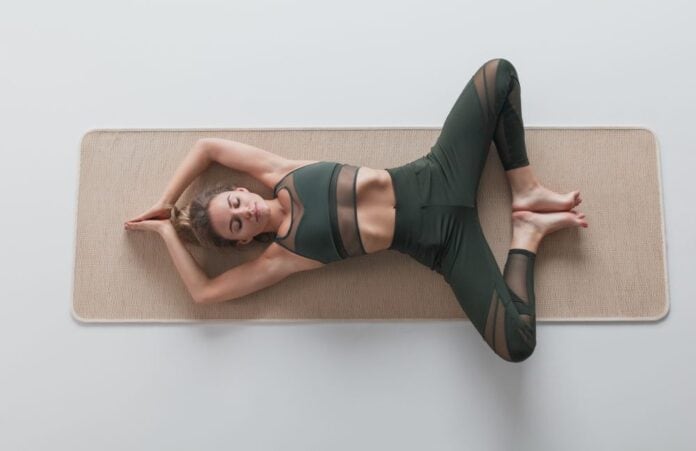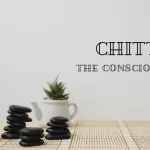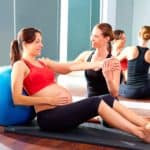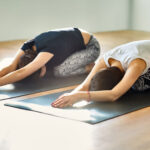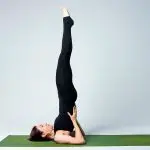Reclining Bound Angle Pose Whether you seek relaxation or the renewal of your energy for the next item on your agenda, the Reclining Bound Angle Pose proves to be a valuable choice. This pose not only rejuvenates and re-energizes but also encourages the body to unwind and expand. Lying on your back with knees apart and feet joined, you’ll experience a release of tension in the chest, abdomen, groins, and leg muscles.
Your breathing may naturally slow, bringing a sense of calm to your mind. Supta Baddha Konasana is ideal for grounding and reconnecting, and it offers relief for issues like menstrual cramps, PMS, and digestive discomfort. In fact, it’s one of the few poses recommended after a meal, but its benefits are accessible at any time, day or night—even as a pre-sleep ritual. Welcome the serenity and benefits of this remarkable asana, allowing your muscles and mind to luxuriate in relaxation.
Sanskrit
Supta Baddha Konasana
(SOUP-tah BAH-dah cone-NAHS-anna)
Supta = lying down, reclining
Baddha = bound
Kona = angle
Reclining Bound Angle Pose: A Deep Dive
Begin in Baddha Konasana, exhaling as you gradually lower your back torso towards the floor, initially relying on your hands. Once your weight shifts to your forearms, employ your hands to gently spread the back of your pelvis and release the lower back and upper buttocks through the tailbone. Ease your entire torso to the floor, supporting your head and neck with a blanket roll or bolster when necessary.
Grasp your upper thighs with your hands, externalize the inner thighs, and press the outer thighs away from your torso. Move your hands down the outer thighs from hips to knees, widening the outer knees from the hips. Then, glide your hands along the inner thighs from knees to groins, envisioning your inner groins sinking into your pelvis. Draw the hip points together, allowing the back pelvis to widen while the front pelvis narrows. Rest your arms on the floor at a 45-degree angle from the torso, with palms facing up.
It’s important to avoid pushing the knees toward the floor, as it may harden the groins, belly, and lower back, especially if they are tight. Instead, visualize your knees floating upward, simultaneously settling your groins deep into your pelvis. As your groins descend toward the floor, your knees will follow suit.
Initially, stay in this pose for a minute, gradually extending the duration to 5-10 minutes. To exit, press your thighs together with your hands, roll over onto one side, and push yourself away from the floor, with your head following your torso.
For beginners, a block with a sticky mat can be used to elevate the feet slightly off the floor, with the outer edges of the feet aligned parallel to the block’s top face. In cases where the lowest block height doesn’t alleviate strain, the block can be turned to its middle height.
To enhance the pose, involve your arms by inhaling and raising them toward the ceiling, perpendicular to the floor. Rock back and forth gently to widen the shoulder blades across your back, then stretch your arms overhead on the floor, palms facing up, while rotating the arms to roll the outer armpits toward the ceiling and pull the shoulder blades down your back towards your tailbone.
Variations:
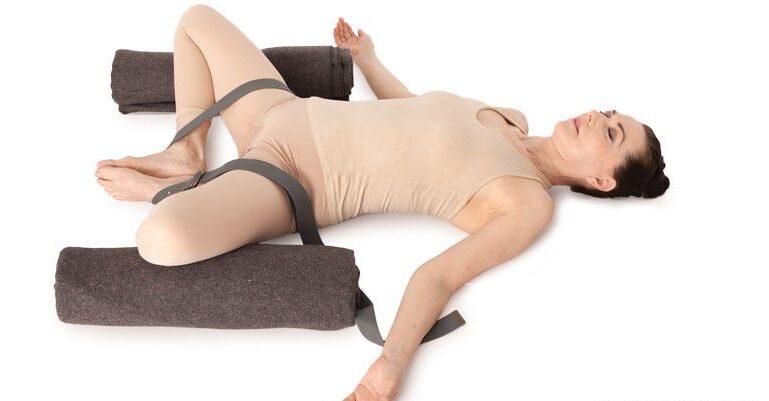
- Supported Reclining Bound Angle Pose: Place a rolled blanket under your knees for added support, making it accessible even for those with tight hip joints or as part of a Restorative yoga practice.
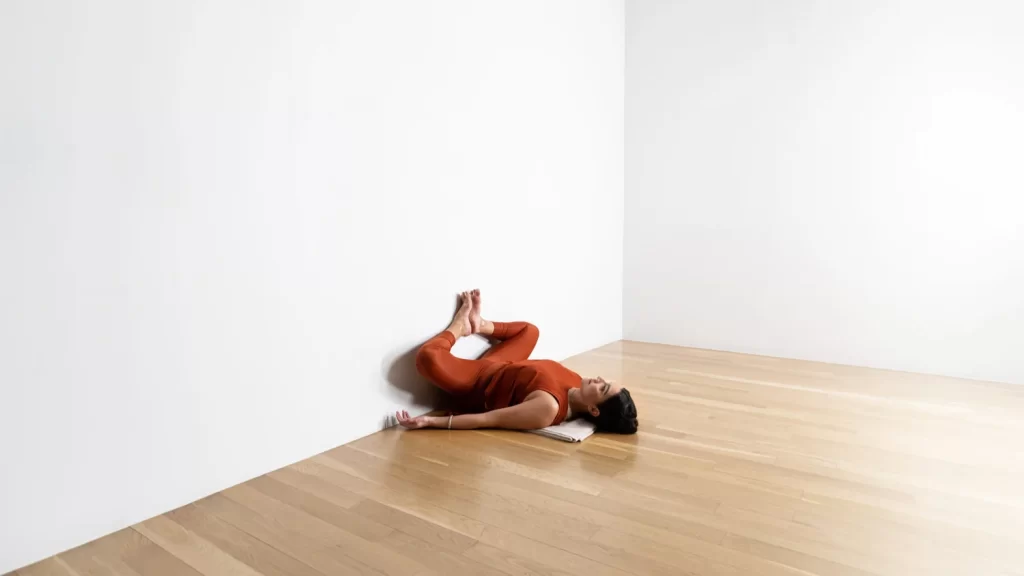
- Wall-Assisted Reclining Bound Angle Pose: Begin in Legs-Up-the-Wall Pose, then bend your knees and bring your feet towards your hips. Open your knees outward and bring the soles of your feet together. Rest your hands on your thighs, and knees, or extend your arms on the floor.
Preparatory and Counter Poses:
Preparatory Poses:
- Baddha Konasana
- Supta Padangusthasana
- Virasana
- Vrksasana
Follow-up Poses: Supta Baddha Konasana serves as an excellent preparatory pose for various standing poses, Gomukhasana, Malasana, Padmasana, and most seated twists and forward bends.
Correct Iying Position at a Limited Аngle Tips
- Extend your arms as wide as needed, creating space between your arms and body to broaden the shoulder blades and induce relaxation in the back of your body.
- For added support and comfort in this pose, consider the use of blocks, blankets, and bolsters. A bolster beneath your back, blocks or blankets beneath the outer knees or thighs, and a blanket under your head can offer a truly rejuvenating experience.
- Many of us grapple with hip and groin tightness due to prolonged desk work. Instead of resisting discomfort, inhale and direct your breath and patience toward even the most rigid areas—affording them the care they require.
- Be aware that releasing tension in one part of the body may indirectly transfer it elsewhere. While in this pose, remember to maintain a relaxed jaw, steady breath, and an open heart and mind.
Benefits and Contraindications
Benefits:
- Encourages activity in abdominal organs such as the ovaries and prostate gland, bladder, and kidneys
- Enhances heart stimulation and overall circulation
- Promotes stretching of the inner thighs, groins, and knees
- Offers relief from symptoms associated with stress, mild depression, menstruation, and menopause
Contraindications:
- Individuals with hip pathologies should exercise caution.
- Those with ankle pathologies should avoid this pose.
- If a supine position causes discomfort in the lower back, individuals with low back pathologies should refrain.
- People with knee, hip, or groin injuries should avoid this pose as well.
Modifications And Props For Beginners
The use of blocks, blankets, and bolsters can be highly beneficial in providing support for this pose. Placing a bolster beneath your back, positioning blocks or blankets under the outer knees or thighs, and/or using a blanket to cushion the head can create a profoundly restorative and comfortable experience.
What are the benefits of a reclined Bound Angle Pose?
- Stimulates abdominal organs like the ovaries and prostate gland, bladder, and kidneys.
- Stimulates the heart and improves general circulation.
- Stretches the inner thighs, groins, and knees.
- Helps relieve the symptoms of stress, mild depression, menstruation, and menopause.
What muscles does reclining bound angle pose work?
Reclining Bound Angle (Supta Baddha Konasana in Sanskrit) is a beginner yoga pose that belongs to the hip openers and supine categories. This asana targets the glutes & hip flexors and knees and also involves spine muscles.
What is the reclined Bound Angle Pose for pregnancy?
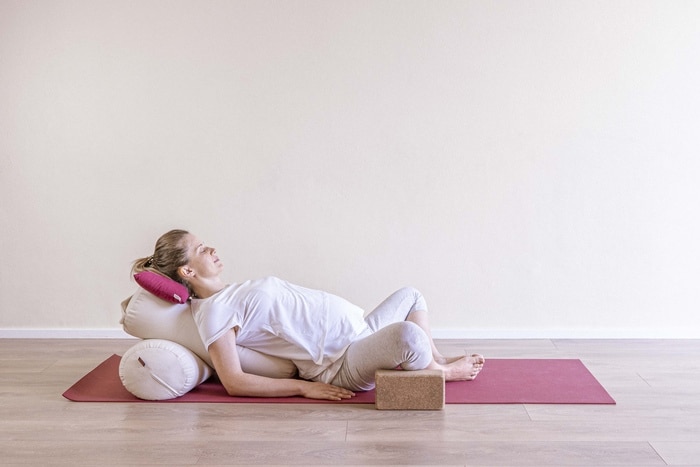
Helps to soften the diaphragm. Stimulates the abdominal organs, promoting digestion. Lengthens the spine. Opens the chest and allows for deep breathing and increased oxygen levels.
Conclusion
In conclusion, Reclining Bound Angle Pose is a powerful and versatile yoga asana that offers a multitude of physical and mental benefits. It stimulates and rejuvenates the abdominal organs, the heart, and the circulatory system, while simultaneously providing a deep stretch for the inner thighs, groins, and knees. Moreover, it can serve as a therapeutic practice for those experiencing stress, mild depression, or the discomforts associated with menstruation and menopause.
To make your practice even more fulfilling, you can customize it by incorporating props like blocks, blankets, and bolsters, which can enhance your experience and deepen the restorative aspects of the pose. By approaching the Reclining Bound Angle Pose with patience, mindfulness, and the right support, you can unlock its full potential.
So, whether you are seeking to balance your body and mind or simply looking for a deeply relaxing and rejuvenating yoga pose, Reclining Bound Angle Pose has much to offer. Make it an integral part of your practice and reap the benefits of this exceptional asana.
















